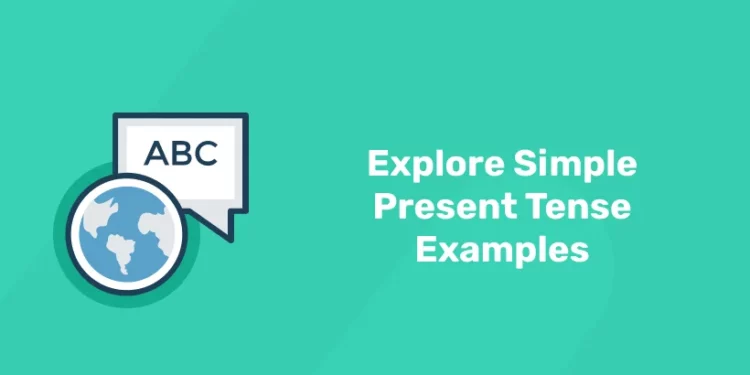Table of Contents
When you first begin to learn English, you typically start out by explaining things that are currently happening to you. Speaking on the past and future is more difficult. But learning the present tense can be straightforward. An essential ability for basic English is the present tense! As soon as you learn how to use it, you may start speaking in English and talking about your interests, occupation, and other topics. Even if you have some English language proficiency, you might be curious to learn more about what the present tense and simple present tense examples.
Start speaking English like a native with our comprehensive course.
What Is the Simple Present Tense?
When you use a verb to describe events that continuously occur in the present, such as every day, every week, or every month, you are using the simple present tense. Any event that occurs frequently or is factual is expressed in the simple present tense. Some examples:
- I go to office every day.
- We play outside after school each day.
- Every Sunday they eat out for dinner.
The verbs “go,” “play,” and “eat” are all in the simple present tense in these sentences. They discuss events that occur frequently in the present. Simple present tense is also used to express feelings and fundamental facts.
For example:
- The sky is blue.
Since “is” is a verb that expresses a fact about something, it is in the simple present tense.
- I am bored.
- They are so excited.
The words “am” and “are” convey feelings and are in the simple present tense.
Just keep in mind that you’re discussing something that keeps happening in the present when you use a simple present tense verb.
How to form the Simple Present
1: Which of the sentences below is grammatically correct?
Most regular verbs utilize the root form in the simple present, with the exception of third-person singular (which ends in –s).
First-person singular: I write
Second-person singular: You write
Third-person singular: He/she/it writes (note the –s)
First-person plural: We write
Second-person plural: You write
Third-person plural: They write
The third-person singular form of a few verbs ends in -es rather than -s. These verbs typically have roots that end in o, ch, sh, th, ss, gh, or z.
First-person singular: I go
Second-person singular: You go
Third-person singular: He/she/it goes (note the –es)
First-person plural: We go
Second-person plural: You go
Third-person plural: They go
The negation of the verb is usually placed before the verb in sentences like “She won’t go” or “I don’t smell anything.”
The verb to be is irregular:
First-person singular: I am
Second-person singular: You are
Third-person singular: He/she/it is
First-person plural: We are
Second-person plural: You are
Third-person plural: They are
Join our Spoken English program today and communicate with ease!
Spoken English Course for Guaranteed Confidence and Career Growth
Spoken English Course by Entri App: Enhance your communication skills, gain certification, and boost your career with confidence.
Join Now!How to make the Simple Present Negative
Simple present verbs can be made negative by adding do/does not to the root form of the verb. Instead of do not or does not, you can also use the contraction don’t or doesn’t.
Example:
- Gary does not want to share the cake.
- He doesn’t think there is enough to go around.
- Her friends do not understand.
- I don’t want cake anyway.
The formula is [to be] + not to make the verb to be negative.
Example:
- I am not a cake lover, but Gary sure is.
- You aren’t ready for such delicious cake.
How to ask a Question
To ask a question in the simple present tense, use the formula do/does + [subject] + [root form of verb].
Example:
- Do you know how to bake a cake?
- How much does Gary love cake?
Elevate your speaking skills with our Spoken English Course!
Common verbs in the simple present
| Infinitive | I, You, We, They | He, She, It |
| to ask | ask / do not ask | asks / does not ask |
| to work | work / do not work | works / does not work |
| to call | call / do not call | calls / does not call |
| to use | use / do not use | uses / does not use |
| to have | have / do not have | has / does not have |
The verb to be in the simple present
| Infinitive | I | You, We, They | He, She, It |
| to be | am / am not | are / are not | is / is not |
Elevate your speaking skills with our Spoken English Course!










